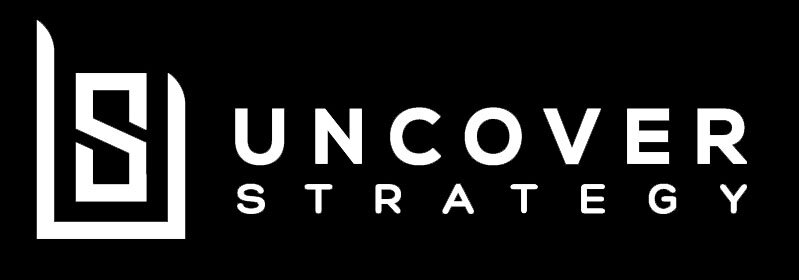Harnessing the Power of AI: Small Businesses Tips Inspired by Fast-Food Giants
Offline -> Online.
Can I let you in on a secret?
Not only did I eat twice at McDonald’s today, I even ordered yet another menu item for dinner at Hungry Jacks (the Australian version of Burger King) for dinner. And no, I am not feeling well at the moment (aside from a slight feeling of shame).
But it got me thinking: Why did I end up eating all my three daily meal times at these sub-healthy establishments today? How the heck did I end up here? How did the businesses make me buy from them three times?
At this McDonald’s in Taupo, New Zealand, I was able to enjoy a meal in a decommissioned DC3 plane in 2019 (hint: it was underwhelming).
Source: Simon Beuse, 2019
Then it hit me: It’s something about their colorful, deal-screaming apps that that found its way onto my phone!
Read on to explore what made me order these vast amounts of dietitian-frightening food, and how you can use this insight to your advantage in your small business (you don’t have to be in the food industry).
O̶f̶f̶l̶i̶n̶e̶ Products.
An offline-product I still love using in 2023: postcards.
Source: Simon Beuse, Mauritius, February 2023
“Booooooooring! Digital products? Nothing new, Simon!”
If this is what comes to mind when you read this, I can’t blame you.
But wait, I do believe there is a bit of new info that might prove useful to you. So why not risk two minutes of your life for the opportunity to discover something new?
Let’s suppose you continue reading this blog article. Isn’t it remarkable that fast-food giants such as McDonald’s, Hungry Jacks and KFC all opted for developing their own playful apps, despite selling inherently offline products? As offline-products, burgers, ice-cream or oil-dripping fried chicken in itself, has little to do with a digital product (you can’t eat a virtual burger). So why did these companies opt for going full digital beyond a simple ordering system?
Online Products.
Going digital for these fast food chains allowed them, as a business, to take orders online. Sure. But this is not even close to the customer-binding activity that is happening on these apps. If McDonald’s just needs an online ordering system, why did they not buy up an already-established software company and tweak it to its liking. They got the cash, right? Going digital? Done!
But when you look at those apps, you might notice that ordering is only one of the many features fast food chains incorporated into their apps.
Next to ordering, you can play games within the apps themselves, be rewarded with points for future spending and, perhaps most importantly, receive notifications about their latest deals that try to kick you towards their nearest outlet.
What has all this to do with their food?
Hungry Jack’s (buggy) app features free food in Australia.
Source: lifehacker.com.au, 2023
All this is designed to attract and bind customers (apart from the even more important data they are collecting). Take it this way: Why would you play a game if you just want to eat your burger? The answer: free food and discounts! And the app keeps reminding you about it via their almost constantly pinging notifications on your phone. If they are able to get you to download their app, they won. They won because now they have access to at least some degree of your shopping behavior and much other information via the app. With this information, for example, they can recommend you a quick afternoon snack if you are just walking by near one of their outlets.
It’s like one of those newsletters we involuntarily signed up to when ordering something online. But on steroids.
What can I learn from this as a small or medium business?
You can’t build your own million-dollar app platform to support your business?
Understandable.
And it is not always an “app” that gets you into the digital space efficiently.
Despite popular belief that I started to notice at business meetings or hackathons discussing these ideas, an “app” is often not the solution. It is often more of a ‘quick fix’ to make an idea sound smart at a hackathon or the good-willed attempt of solving a pressing problem. Take Amazon India’s competitor Flipkart as an example. Although they were established and experienced at the time, the company started cutting out their desktop accessible webshop and made the store “app only”. With the intention to save money (and many businesses have done this successfully, such as the popular German brokering platform TradeRepublic), and concentrating on the majority of mobile phone users in India, the new hurdle of intentionally installing an app to view and purchase items caused the competitor to sharply decline. So an app alone is frequently not the answer. It can be, but not always.
But then, what can you do to get digital ‘right’? How can you learn from any of the business stories above (including my embarrassing fast-food marathon) and nurture a way of thinking to put you ahead compared to your competition?
Just do it.
The key to the burger example is this: despite selling only offline products, fast-food giants built a digital environment, exploiting digital services to get you to sell more and learn more. You can follow somewhat of the same strategy, even as a small business, harvesting network effects and reach.
Let’s take AI as an example. A vast amount of digital and AI tools is being thrown onto the market. While their quality differs greatly (try them out prior!), you can, and should, use them right now. The key is to experiment (recombine) and kill —- what you can find online and combine it with other services. And it doesn’t have to be only AI, either.
A low-tech sales booster for your business?
Source: Fremantle City, Perth, Australia, 2023
You know your customers are searching online for reviews, your business hours, your web presence and more. Again, nothing new here. However, it is that very existence online that translates into your real world benefits - and doing lots of it. Getting started and continuously adding tools you can use to advance is the hardest part.
Using the example of a small coffee shop, I want to list some examples. However, this is also applicable to your “Berlin underground drinking art studio” if you are into that sort of stuff. Really, it’s for any business trying to extend its reach.
Text to order (SMS, WhatsApp, etc.)
Okay, I stole this idea from a few coffee shops around here in Yeronga, Queensland where I drive by each morning. A low-tech option, incentivizing time-strapped customers.Web presence (+tools)
Again, nothing new. But I am amazed how many small businesses don’t have any presence online (this might be more the case in Germany). Do you have one? If so, have you exhausted the options of your site? Include online-booking options, showcasing pictures of your work or offer courses. Fill out your business profile on Google. Use Insta, Facebook & Co. The key here is to offer everything that you can (with a reasonable amount of work) tap into online – so that your customers can find you.Zapier & Co
This one is especially powerful. Connect and combine existing services like your E-Mail and calendar with AI or other services. Examples are plentiful (but remember to be ethical). For example, you can let Zapier read your emails, push them through ChatGPT, and ask it if it’s important or not (you can tell it what is important). If it is, you can get a text or call. Of course, you shouldn’t rely on this alone, as tools make mistakes. But it can be an easy way to keep on top of many significant things for your business. Keep an eye out for new info as I will talk about this more.More, more, more.
Again, this might sound trivial. But I am making this mistake myself a lot. This all results in network effects: a customer who prefers chat might reach you via WhatsApp, simply by offering this option. This could be another sale.
Failing fast.
If you're not failing every now and again, it's a sign you're not doing anything very innovative. - Woody Allen
As with any innovation – failing fast is key. Today, there are even conferences out there where people share only their failed stories around the globe.
What can you do to make use of AI or other digital services to accelerate your business? Which ones will you try next?
Try out the tools above quickly. There is a ton of new AI tools coming out every single day. The best part of it all, in my opinion, is that you can do all this without code. You just need to trial and error. Fast.
Thank you for reading today’s article on my blog.
If you found it helpful, I would love to connect with you to see how we can improve your business (I am currently offering this completely free!). If you think this article was not worth your time– let me know in the comment section is right below this post! In any case, enjoy your day! Cheers, Simon






